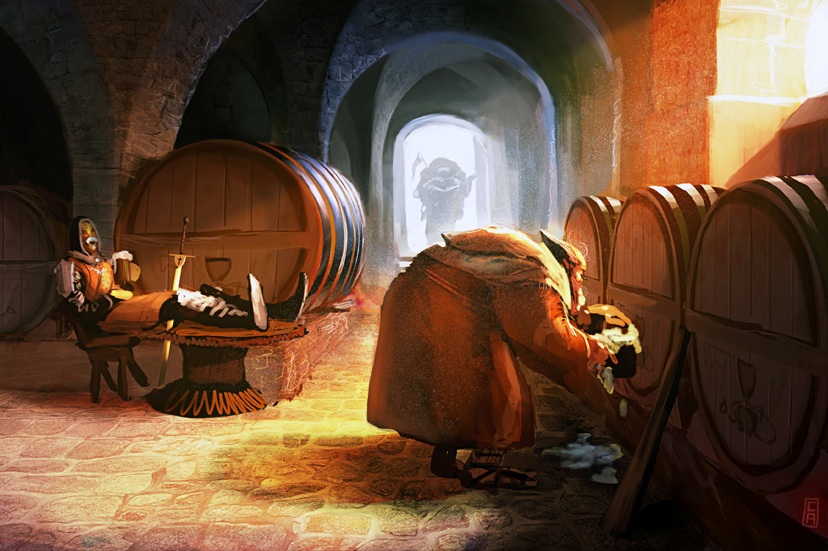Winepress
The winepress is a mechanical means of obtaining the juice from wine, using variously a bladder, a horizontal or a continuous screw. While much of the wine produced locally continues to be made by the treading of grapes in a large tub, sometimes as wide as 12-15 ft. in diameter, intensive wine-producing areas have turned to the use of a water or wind mill in order to more efficiently facilitate the process.
Thus a winepress resembles a fulling mill, using water to turn an axle that variously compresses grapes against the sides of a cylinder. The pressure is controlled, to avoid crushing the grape's seeds and thus releasing tannins into the fluid. Once the effuse is removed and collected into barrels, the solid remains of the grape, or "pomace," is used to produce various brandies, or is used as animal fodder.
These mills are typically managed by an extended family of 3-18 persons.
Construction
The construction of a winepress mill is comparable to the fulling mill. Winepresses have the capacity to grind up to 4,000 lbs. of grapes per day.
Location
Because the winepress demands less force than a gristmill, it can be run upon a river that is only 1 pt. wide; it can also be run on wind power.
Winepresses only exist in provinces that possess at least three combined references of grapes and wine; otherwise, the amount of production is more effectively managed through the use of tubs.
See also,
Hammer (symbol)
The Adventure
